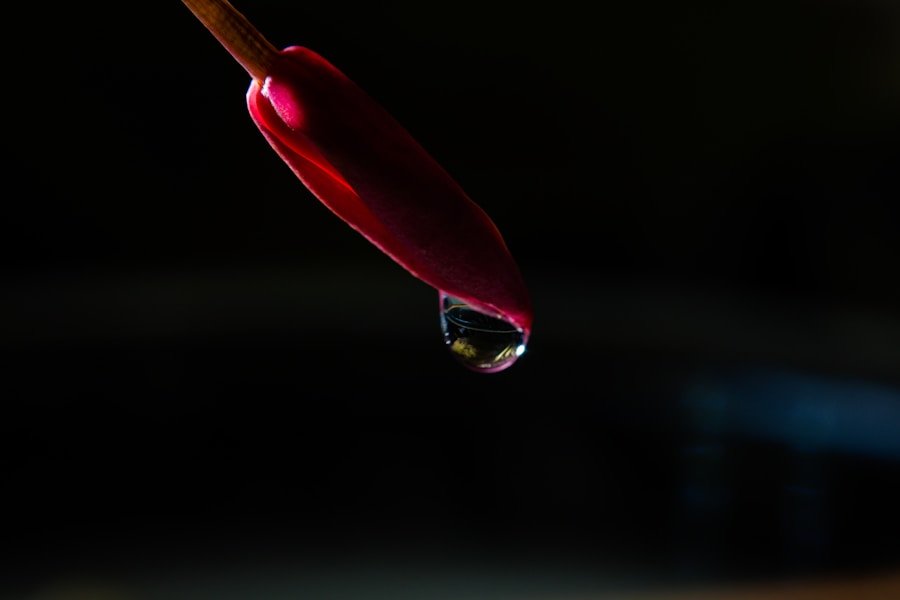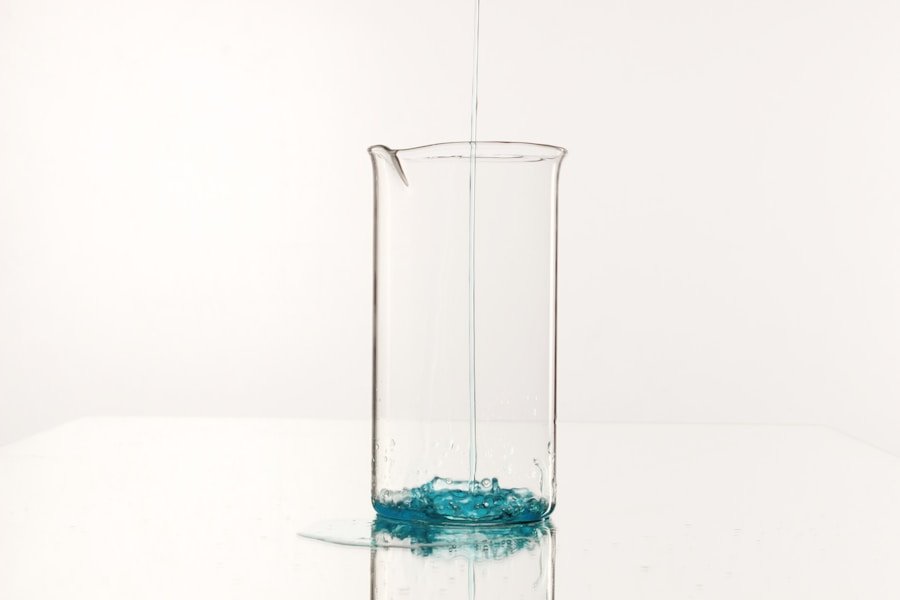Precision in liquid measurements is a cornerstone of successful cooking and baking. The accuracy with which ingredients are measured can significantly influence the outcome of a recipe. In culinary arts, even slight deviations in the quantity of a liquid ingredient can lead to undesirable results, such as altered flavors, textures, or even the failure of a dish to rise properly.
For instance, in baking, the balance between wet and dry ingredients is crucial; too much liquid can result in a dense cake, while too little can lead to a dry, crumbly texture. This precision is not merely a matter of preference but rather a scientific necessity that ensures the chemical reactions required for cooking occur as intended. Moreover, precision in liquid measurements extends beyond the kitchen.
In fields such as pharmaceuticals and chemistry, accurate liquid measurements are vital for ensuring safety and efficacy. A slight miscalculation in the dosage of a medication can have serious consequences for patient health. Similarly, in laboratory settings, precise measurements are essential for replicating experiments and achieving reliable results.
Thus, the importance of precision in liquid measurements transcends culinary applications, underscoring its relevance across various disciplines where accuracy is paramount.
Key Takeaways
- Precision in liquid measurements is crucial for achieving consistent and accurate results in cooking and baking.
- Tools such as measuring cups, spoons, and kitchen scales are essential for accurate pouring and measuring of liquids.
- Understanding different measurement units such as ounces, milliliters, and fluid ounces is important for precision in liquid measurements.
- Techniques like pouring slowly and at eye level, using the meniscus, and using the tare function on a scale can help achieve precision in liquid measurements.
- Common mistakes in liquid measurements include using the wrong measuring tools, inaccurate reading of measurements, and not accounting for temperature and viscosity changes.
Tools and Equipment for Accurate Pouring
To achieve precision in liquid measurements, the right tools and equipment are indispensable. Measuring cups and spoons are among the most common instruments found in kitchens, but not all measuring devices are created equal. For instance, liquid measuring cups typically feature a spout and are designed with clear markings that allow for easy reading at eye level.
These cups are often made from glass or plastic and can accommodate various volumes, making them versatile for different recipes. When using these cups, it is essential to fill them to the appropriate line without overfilling or underfilling, as this can lead to inaccuracies. In addition to measuring cups, digital scales have gained popularity for their ability to provide precise measurements in grams or ounces.
While traditionally associated with dry ingredients, many digital scales can also be used for liquids when combined with appropriate containers. For example, placing a bowl on the scale and taring it to zero before adding the liquid allows for accurate measurement without the need for a separate measuring cup. Furthermore, specialized tools such as graduated cylinders and pipettes are commonly used in scientific settings where extreme accuracy is required.
These instruments allow for precise dispensing of liquids, making them invaluable in both culinary and laboratory environments.
Understanding Different Measurement Units

Liquid measurements can be expressed in various units, each serving specific purposes depending on the context. The most common units include milliliters (mL), liters (L), fluid ounces (fl oz), cups, pints, quarts, and gallons. Understanding these units is crucial for anyone involved in cooking or baking, as recipes may use different systems of measurement.
For instance, a recipe might call for 500 mL of water, while another might specify 2 cups. Knowing how to convert between these units is essential for maintaining accuracy. Conversions can be particularly challenging when dealing with larger quantities or when switching between metric and imperial systems.
For example, one cup is equivalent to approximately 237 mL, while one liter equals about 4.22675 cups. Familiarity with these conversions not only aids in following recipes accurately but also enhances one’s ability to scale recipes up or down as needed. Additionally, understanding the context in which certain units are used can provide insight into regional cooking practices; for instance, many American recipes favor fluid ounces and cups, while European recipes often utilize milliliters and liters.
Techniques for Pouring with Precision
| Technique | Precision Level |
|---|---|
| Free Pouring | Medium |
| Jigger | High |
| Measuring Cup | High |
| Weighted Pourer | High |
Mastering the art of pouring liquids with precision involves employing specific techniques that enhance accuracy and control. One fundamental technique is to pour slowly and steadily, allowing the liquid to flow smoothly into the measuring device or container. This approach minimizes splashing and reduces the likelihood of overfilling.
When pouring from a larger container, such as a bottle or jug, it is beneficial to tilt the container gradually rather than abruptly; this controlled motion helps maintain a steady stream of liquid. Another effective technique is to use a funnel when transferring liquids from one container to another. Funnels not only help direct the flow of liquid but also prevent spills that could lead to inaccurate measurements.
When using a funnel, it is important to ensure that it fits securely into the receiving container to avoid any gaps that could cause leakage. Additionally, practicing good pouring posture—such as holding the container at eye level—can aid in achieving better visibility of measurement markings and enhance overall control during the pouring process.
Common Mistakes in Liquid Measurements
Even experienced cooks can fall prey to common mistakes when measuring liquids. One prevalent error is failing to read measurements at eye level. When measuring liquids in transparent containers, it is crucial to ensure that the meniscus—the curved surface of the liquid—is aligned with the measurement line at eye level.
Reading from above or below can lead to inaccuracies that affect the final outcome of a recipe. Another frequent mistake involves using inappropriate measuring tools for specific types of liquids. For example, using dry measuring cups for liquids can result in overfilling or underfilling due to differences in design.
Dry measuring cups are typically designed to be filled to the top and leveled off, while liquid measuring cups allow for accurate readings based on volume markings. Additionally, neglecting to account for temperature variations can lead to discrepancies; for instance, some liquids expand when heated, which may affect their volume if measured at different temperatures.
Adjusting for Temperature and Viscosity

Temperature and viscosity play significant roles in liquid measurements and must be considered for accurate results. The viscosity of a liquid refers to its thickness or resistance to flow; thicker liquids like honey or molasses require different handling compared to water or broth. When measuring viscous liquids, it is often helpful to warm them slightly to reduce thickness and facilitate easier pouring.
However, care must be taken not to overheat them, as excessive heat can alter their properties. Temperature also affects the volume of liquids due to thermal expansion. For example, water expands when heated; thus, a liter of water measured at room temperature may not occupy the same volume when heated to boiling point.
This phenomenon is particularly relevant in scientific applications where precise measurements are critical. In culinary contexts, while minor temperature variations may not drastically affect most recipes, being aware of these factors can enhance overall accuracy and consistency.
Tips for Mastering Liquid Measurements
To master liquid measurements effectively, several practical tips can be employed that enhance both accuracy and efficiency in the kitchen. First and foremost, always use the appropriate measuring tools designed specifically for liquids; this ensures that measurements are taken correctly without unnecessary guesswork. Investing in high-quality measuring cups with clear markings can make a significant difference in achieving precise results.
Another valuable tip is to practice mise en place—preparing all ingredients before starting a recipe. This practice allows cooks to measure out all liquids beforehand, reducing the risk of errors during the cooking process. Additionally, keeping a conversion chart handy can facilitate quick adjustments between different measurement units without disrupting workflow.
Finally, regular practice and experimentation with various recipes will build confidence and familiarity with liquid measurements over time.
Applications of Precision Pouring in Cooking and Baking
Precision pouring has far-reaching applications in both cooking and baking that extend beyond mere ingredient measurement. In baking, where chemical reactions are critical for achieving desired textures and flavors, accurate liquid measurements can determine whether a cake rises properly or if bread develops an ideal crust. For instance, when making bread dough, the ratio of water to flour must be precise; too much water can lead to overly sticky dough that fails to hold its shape during proofing.
In cooking applications such as sauces or dressings, precision pouring allows chefs to balance flavors effectively. A well-measured amount of vinegar or oil can transform a simple vinaigrette into a culinary masterpiece; however, an imprecise pour could result in an overpowering taste that detracts from the dish’s overall appeal. Furthermore, precision pouring is essential in professional kitchens where consistency is key; chefs must replicate dishes with exactitude day after day to meet customer expectations.
In summary, precision in liquid measurements is vital across various domains—from culinary arts to scientific applications—where accuracy directly impacts outcomes. By utilizing appropriate tools and techniques while being mindful of common pitfalls and external factors like temperature and viscosity, individuals can enhance their skills in measuring liquids accurately. Mastery of these principles not only elevates cooking and baking experiences but also fosters a deeper appreciation for the science behind culinary creations.
If you are interested in smart home devices, you may also want to check out this article on the 5 Best Smart Doorbells with Video. These devices can provide added security and convenience to your home.
FAQs
What are some common tools used to measure liquids accurately?
Some common tools used to measure liquids accurately include measuring cups, graduated cylinders, and kitchen scales.
What is the importance of measuring liquids accurately?
Measuring liquids accurately is important in cooking, baking, and scientific experiments to ensure the desired outcome and maintain consistency in recipes and experiments.
How can I measure liquids accurately using a measuring cup?
To measure liquids accurately using a measuring cup, place the measuring cup on a flat surface, pour the liquid into the cup, and then check the measurement at eye level to ensure accuracy.
What is the difference between measuring liquids by volume and by weight?
Measuring liquids by volume involves using tools like measuring cups and graduated cylinders to measure the amount of space the liquid occupies, while measuring liquids by weight involves using a kitchen scale to measure the actual weight of the liquid.
Are there any tips for measuring liquids accurately?
Some tips for measuring liquids accurately include using the appropriate measuring tool for the liquid being measured, pouring the liquid slowly and steadily, and checking the measurement at eye level for accuracy.

